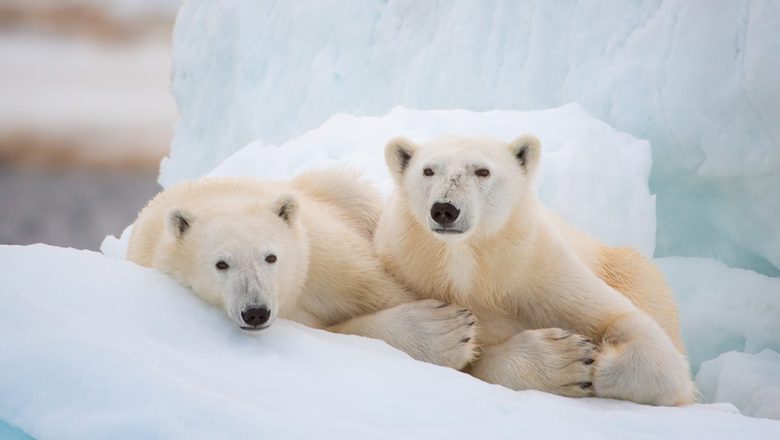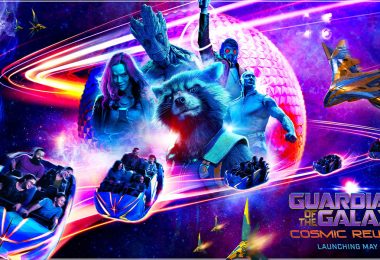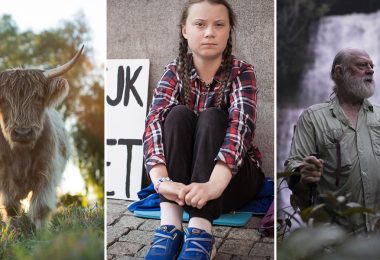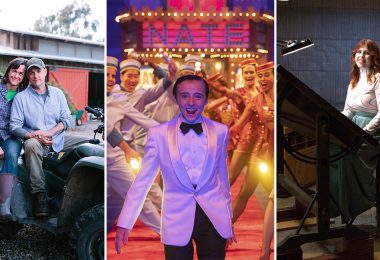By Courtney Potter
They’re one of the most recognizable (and beloved) animals on Earth, and they’re coming to Disney+ in celebration of Earth Day… Disneynature’s Polar Bear, narrated by two-time Academy Award® nominee Catherine Keener (Capote, Being John Malkovich), tells the story of a new mother whose memories of her own youth prepare her to navigate motherhood in the increasingly challenging world that polar bears face today. Directed by Alastair Fothergill and Jeff Wilson, the team behind Disneynature’s Penguins, and produced by Fothergill, Wilson and Roy Conli, the film streams exclusively on Disney+ beginning April 22.
Filmed beginning in 2019 near Svalbard, Norway—just 650 miles from the North Pole—Polar Bear gives audiences a never-before-seen look into the lives of this vulnerable species. To complete their mission, filmmakers created a revolutionary, environmentally friendly, self-contained, sled-mounted mobile camp with a kitchen, lounge area, sleeping accommodations, and several other rooms; their filmmaking equipment included traditional long-lens cameras, a gyro-stabilized camera system, and drones. And it all had to be transported over 60 miles across a glacier—an operation that took 10 full days.
D23 recently spoke with Fothergill and Wilson about their incredible experience directing Polar Bear, made all the more unusual (and memorable) by the global COVID-19 pandemic:
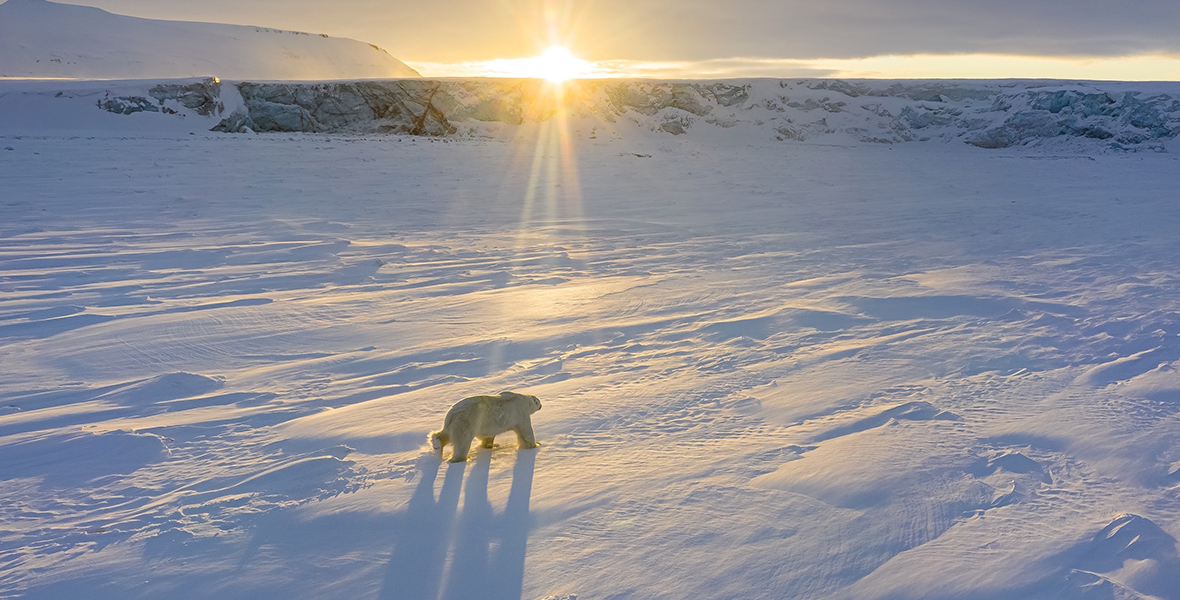
D23: The Official Disney Fan Club: Thanks for chatting with us today! We’d love to know—how did the idea for Polar Bear come about?
Jeff Wilson (JW): It started with a passion of Alastair’s, as long ago as I can remember. I’ll let him run with that.
Alastair Fothergill (AF): Both Jeff and I have been lucky enough to work in the poles a lot—certainly, we’re both very passionate about that as a habitat. It’s very special. The Arctic is not like anywhere else. And certainly, as a wildlife filmmaker, you’re often asked, “What’s your favorite animal?” And for me it’s either the chimpanzee—which we made a Disneynature film about in 2012—or the polar bear… I used to keep coming back to pitch meeting after pitch meeting, and they kept on saying to me, “Are you gonna pitch that white bear film again?” And I said, “Yes, I am!” Possibly we wore them down by erosion, but in the end, they were persuaded.
D23: Can you talk a bit about the process? How did the pandemic come into play?
JW: We have the most fluid scripts of any film director I can imagine, because the natural world can throw problems and magic in equal portions your way… The [challenge] about spending time with polar bears is that you really have to get yourself used to the environment as quickly as you possibly can, but that can take a week to 10 days just in the pure logistics of getting there, getting comfortable, getting camp set up, getting your boats in the right place. Often our shoots took a long period of time—eight, nine, 10 weeks in one go, and we would swap people in and out. So we were filming more or less constantly, despite COVID.
AF: We did have to compromise; the British camera operators we would’ve sent in were not allowed into Norway [once the pandemic started] and we had to use local camera operators, which at the beginning was a slightly worrying risk for Jeff and me—but proved to be very successful.
JW: When you are working in the poles, especially in with polar bears, you tend to work from March through the end of September, when the sunlight is there. What many people don’t realize is that the sun rises in mid-March and doesn’t set again until late November; you have 24-hour sunlight, and our crews are often working in 24-hour periods—it’s not a nine-to-five job. So Alastair and I almost have to be on 24-hour directorial attention. You really need two directors in order to play off of one another.
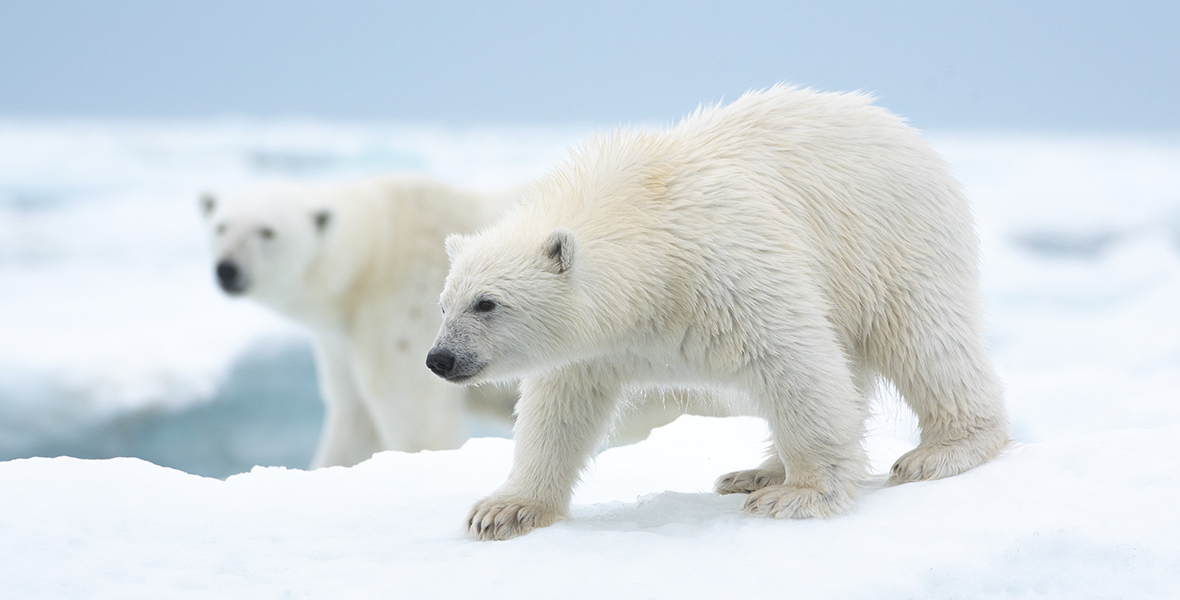
D23: How was Polar Bear different than other Disneynature films you’ve worked on? Any particularly memorable moments?
AF: One of the things that excited us about this project is that so little of polar bear life has actually been filmed. I think probably one of the most memorable sequences is when our protagonist, our female bear—after three years on her own in our story—meets a young male bear… The scientists, everybody who’s seen it, just don’t know quite what’s going on. It’s a wonderfully intimate moment. They play together. And it’s particularly intimate because female bears tend to fear males, because they are known to kill cubs and are pretty aggressive. We filmed amazing courtship rituals, which are really beautiful and intimate. So that was very, very special.
And the other thing is we’ve filmed a lot of behavior in the summer that we hadn’t expected: bears feeding on whale carcasses, bears going up cliffs to steal bird eggs, bears attempting to hunt harbor seals. These are all behaviors that have only evolved in last four or five years, because the ice is melting earlier and the bears are now forced to resort to new hunting techniques. So there’s an awful lot in the film that we have never seen before.
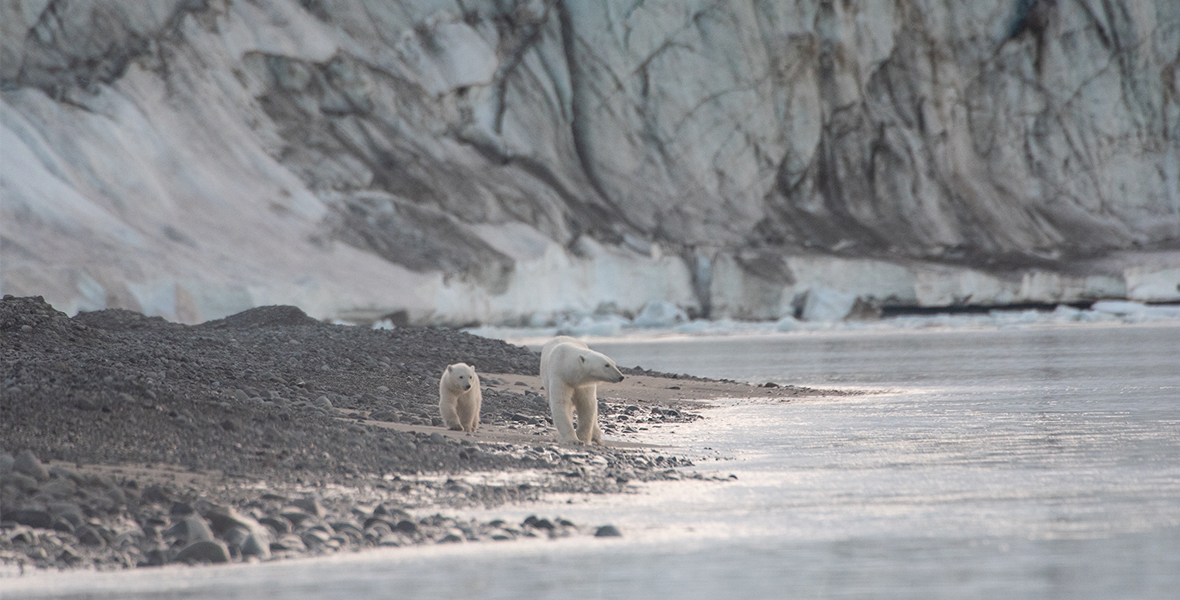
D23: What do you hope audiences take away from the film?
JW: Polar bears are unique characters. They show traits that many of us would recognize in ourselves or our own families. And I think that’s always an important storytelling role, in any of the Disneynature films that we do. I also think that we are showing people a part of the world that is, quite feasibly, one of the most beautiful places on Earth—a rarely visited place, and one that is changing fast. I really hope that audiences feel as much passion for the habitat and the environment that we’re putting in front of them—the location—as they do the bears. It is such a magnificent place, and you can’t help but fall in love with the sheer beauty and wonder of the location. So if they can take away a love for the bears and a love for the environment, we’ve won on both counts.
AF: They really are such extraordinary animals, on every level. The other thing about polar bears is that their world always used to change. The thing about the poles is they are transformed completely summer to winter, right? The bears were adapted to that, and that narrative alone is fascinating. But when you actually realize that the predictability of that change has now completely been upset by global warming, now these bears are even more impressive. So I hope audiences, once they’ve seen the film, are just blown away by the power of this animal, and have newfound respect for this animal—while also recognizing there’s a wider environmental narrative.
See Disneynature’s Polar Bear on Disney+ beginning Friday, April 22.


